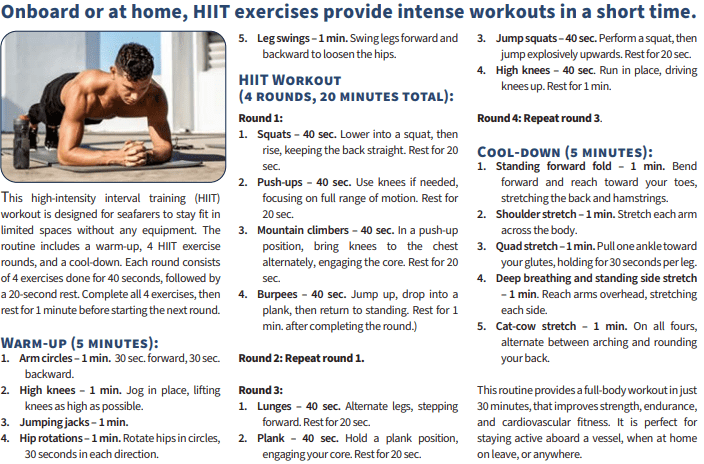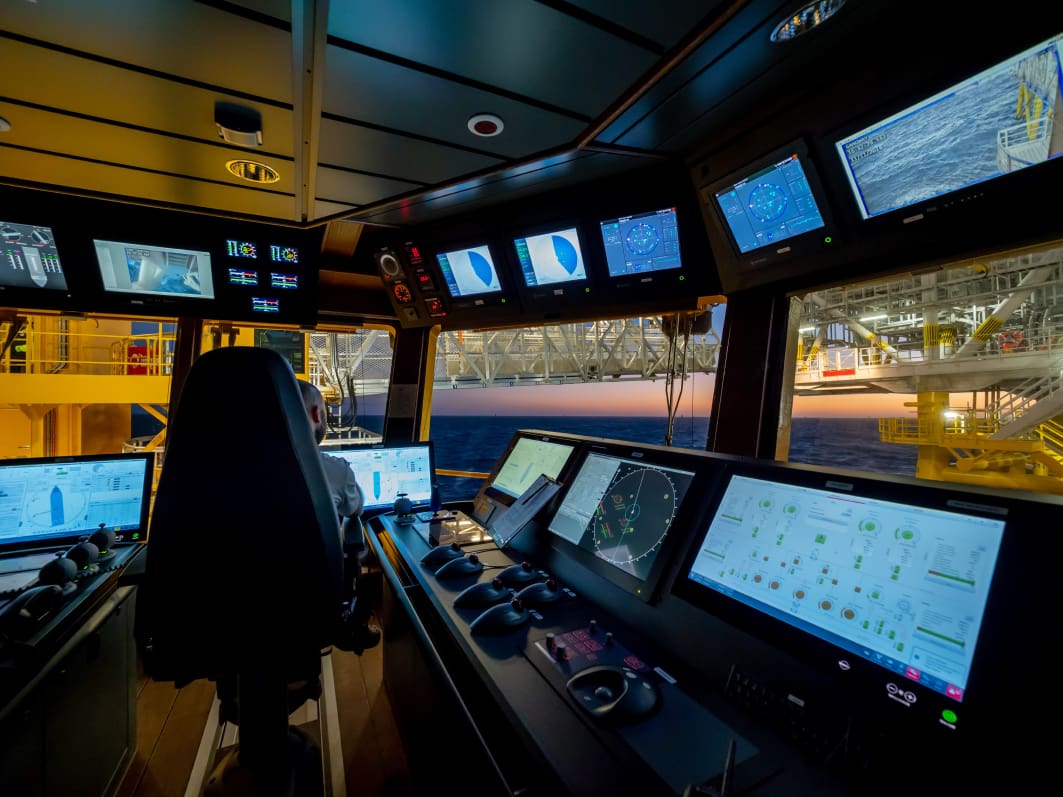Crew Welfare: Staying Fit Onboard

Staying physically fit while working at sea is crucial for seafarers’ overall health and well-being. The demanding and often isolating nature of life onboard presents unique challenges, making it essential to prioritize regular exercise, as it not only enhances general health, strengthens your muscles and your reflexes, and ensures that you are capable of performing your duties safely and effectively.
Regular exercise is not just about maintaining physical appearance; it plays a significant role in enhancing overall health, improving mental well-being, and increasing job performance. It doesn’t have to be weight training to the point of exhaustion… it’s about movement, about stimulating muscles, ligaments and nerves, about the interaction and release of hormones. Plus, when playing team sports, or hitting the gym with friends, sport improves comradery and mental well-being.
How to measure your fitness
A key measure of physical fitness is the Body Mass Index (BMI), a numerical value derived from a person’s height and weight. BMI is used to assess whether an individual has a healthy body weight for their height, categorizing them as underweight, normal weight, overweight, or obese. For seafarers, maintaining a healthy BMI is particularly important, as a high BMI can increase the risk of chronic conditions like cardiovascular disease, diabetes, and joint problems.
Moreover, a high BMI can affect a seafarer’s ability to pass mandatory medical examinations. As part of the health assessment criteria, if a seafarer has a BMI that classifies them as obese, they may face restrictions or even disqualification from service if they are deemed unfit for duty. This can have serious implications for their careers, making it imperative to monitor and manage weight through regular exercise and a balanced diet.

Staying Fit Improves Safety
Beyond individual health, maintaining fitness is critical for safety. The demanding nature of maritime work often requires quick responses, physical strength, and endurance. A fit crew is better equipped to handle emergencies, whether it’s responding to a fire, managing heavy equipment, or executing a rescue operation. Thus, staying fit is not just a personal responsibility but a professional one, ensuring you are always ready to perform your duties effectively and safely.
Incorporating regular exercise into your daily routine onboard doesn’t have to be complicated. Many ships are equipped with basic gym facilities, but even without this, aerobic exercise is possible through group sports, High Intensity Interval Training (HIIT), and creative use of the ship’s space. Walking and jogging, exercise bikes, climbing stairs, lifting weights or doing yoga all help.
Fitness is all about training, metabolism, and activating nerve connections and the immune system. You know how it is – you feel strong and happy at the end of the day, despite being exhausted.
Remember, your health is your most valuable asset, and by keeping fit, you are not only taking care of yourself but also contributing to the overall safety and efficiency of your vessel and fellow crew.
30-Minute Onboard HIIT Routine

This article is featured in the Beacon 26 magazine. While onboard, you can download the full issue from DocMap: O:\ApplicationData\FileSync\fromoffice\all\Beacon\

